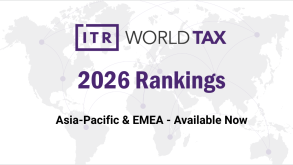The life sciences industry includes companies that develop, make and market pharmaceutical or biopharmaceutical prescription drugs and various medical devices. The industry is characterised by its heavy reliance on basic and applied research, as well as clinical development activities. These activities are subject to considerable uncertainty and the odds of failure are significant.
Also, the development cycles for most products could easily extend beyond a decade. The intellectual property (IP) generated from these research and development activities (typically patents and technical data) forms the core value driver for the industry. The business model of the life sciences industry relies on a long cycle of investment followed by a relatively high margin commercialisation period for successful products only.
Each prescription drug and each medical device must be approved in each jurisdiction by governmental authorities. In many countries, the drug or device prices, or their reimbursement rates are subject to direct negotiations with governmental authorities or substantial oversight.
In summary, governments, by and large, determine which drugs and medical devices will be sold within their territories and exert significant influence on how they will be priced. Within this regulatory framework, companies in the life sciences industry typically run a tightly controlled, physical supply chain to deliver their products to consumers.
Given its conventional IP and supply chain, at the inception of BEPS Action 1, it would have been hard to imagine that companies in the life sciences industry would be within the scope of the digital economy.
Interim proposals and unilateral measures (such as the UK's proposed and France's enacted digital services tax) do not affect life sciences companies directly. While life sciences companies were outside the realm of the ring-fenced digital economy, with the advent of the OECD's Programme of Work to Develop a Consensus Solution to the Tax Challenges Arising from the Digitalisation of the Economy, the life sciences industry, with its relatively high profitability during the commercialisation phase, will likely experience a fair amount of scrutiny, especially with respect to proposed profit allocation rules.
Viewed through this lens, companies in the life sciences industry, many of them with substantial returns due to intangible property, are likely to be a significant focus of the programme and the underlying forces driving it, regardless of any substantial value (real or perceived) derived from digital and/or marketing aspects of their businesses.
How digitalised is the life sciences industry?
The first step is to review some basic attributes of the life sciences industry against the OECD's assessment of the challenges of digitalisation of the economy.
In the life sciences industry, the term 'marketing intangibles' normally refers to perceptions and actions by practitioners or consumers to prefer a drug or a device over competing products with the same efficacy and safety profiles.
Considering that most jurisdictions impose significant restrictions on the content and the manner of disseminating information, the emergence of true marketing intangibles would be the exception rather than the rule. It is hard to deviate from the approved facts and launch innovative marketing campaigns, or pricing policies. Wherever marketing intangibles may appear, under the new 'control of risk' paradigm of the OECD TP guidelines, income associated with marketing intangibles would normally be attributed to the entity or entities that fund and control such efforts, which, in most cases, may not necessarily be the local entities.
Marketing intangibles redux: market access
Over the past decade, during their audits of life sciences industries, some tax authorities have floated the theory that a 'market access' premium must be included in determining target profit margins for local distributors of life science industry products, because local market sales would only be possible through a local legal entity.
The gist of the argument is that only a local legal entity can hold the authorisation to sell products in that jurisdiction, and such registrations would be touted as a comparability difference from independent distributors. However, under the arm's-length standard, such assertions of a market access premium on the basis of a mere registration would not be considered a significant profit attractor, because the local distributor gets such access only by virtue of having an innovative product.
Whether it is the marketing intangibles, market access, or some other approach, transfer pricing examination of local distributors of life sciences companies have been commonplace. Many tax authorities are often upfront about their expectations to see higher margins for life sciences distributors than others, regardless of the specific facts and circumstances of a business.
The programme calls for a baseline return in market jurisdictions "for marketing, distribution, and user-related activities", which appears to support the market access premium idea by advocating a baseline return in market without differentiating the level of intensity in any particular jurisdiction.
The baseline return the programme calls for is in a similar vein as the inbound distributor guidance that the Australian Taxation Office (ATO) recently introduced for inbound distributors to Australia. The ATO guidance establishes baseline profitability return ranges for several industries, life sciences included, with the implication that a company will face a lower audit risk the higher the distributor's return within those ranges. The ATO also specifies increased profitability for such added functionality as regulatory approval, market access, government reimbursement activities, and specialised technical services.
On the one hand, trying to arrive at a status quo around baseline return levels may be a welcome development, as it could potentially reduce the uncertainty for taxpayers and set a uniform benchmark for market access. On the other hand, any such policy would probably conflict with the arm's-length standard and, as such, may represent a step back from the universal convergence of transfer pricing within the ALS framework. Moreover, would an agreed upon baseline return represent only a floor, so that the same TP controversies would continue about how much more return should be added for the local functions, or would it be a set outcome?
Often the countries arguing for market access on life sciences products point to higher margins during commercialisation, ignoring the long and uncertain gestation period for R&D investments. From an economic policy perspective, if the countries have issues about their healthcare and patent protection systems, introducing a new taxing right in the international tax system is unlikely to be the best solution for such issues.
A requirement that a business report an amount of minimum taxable income as a percentage of sales revenue would be tantamount to introducing an excise tax. Considering that many jurisdictions already have specific indirect taxes on sales of prescription drugs or medical devices, it is debatable whether adding another indirect tax at the cost of changing the international tax system would be worthwhile.
Finally, it is well established that the incidence of an indirect tax falls more on consumers when their demand is inelastic (as is the case for most prescription drugs as they are usually essential to cure diseases, or improve the quality of lives, or save lives) and supply elasticity is relatively high (because companies can ramp up or ramp down production relatively easily). At least in the life sciences industry, layering on a new tax with a high degree of incidence on consumers may not be consistent with the programme's policy goals.
Data and user/consumer participation
The life sciences industry has its share of digital initiatives, but these efforts are mostly around collecting and processing patient data to understand outcomes.
There are some ongoing experiments with value-based billing, but consumer data has not been a significant driver yet. On the other side, there are digital tools being deployed for discovery and research, but they are distinct from any user data. In most cases, clinical trials are conducted on a worldwide basis, but the participants are subject to clinical protocols and their data is produced with significant local presence and involvement.
Scale without mass
Because it produces unique and life-saving products, the life sciences industry can potentially sell its products remotely in some markets.
Also, life sciences products generally have a relatively high monetary-value-to-physical-mass ratio, making them easier to ship by air. Recent digital advances allow potential customers to access company websites and order products remotely, and companies use third-party logistics service providers to deliver the products.
The regulatory framework for life sciences industries, however, still requires local authorisations and registrations. As a result, such remote purchases would normally be made by the local distributors or hospitals, not directly by consumers, and there will be a taxable presence – if not by the manufacturer, by its related or unrelated-party distributors.
Potential impact of global profit allocation proposals
As discussed above, while a life sciences company does not fit the mould of a digital company, it may still be affected by the programme.
Determining total profit to be split
Two of the three positions proposed by the programme – the modified residual profit split (MRPS) method and the fractional apportionment (FA) method – appear to start with the global, regional, or business unit profit of a multinational enterprise (MNE).
The programme acknowledges the difficulty of identifying the proper business unit level, and it appears that there is unlikely to be much customisation by industry. Most proposals also suggest that the companies subject to the new regime will be established MNEs above a certain size. Accordingly, life sciences companies that may be subject to these proposed methods are likely to be larger, multiproduct companies.
Considering the long life cycle of each individual product, starting with a decade or more of losses in a few jurisdictions followed by a relatively high level of profits in many jurisdictions, life sciences companies may find it easier to apply these methods in the most aggregated levels, so the costs associated with development can at least be partially adjusted, albeit on a staggered basis.
Quantifying non-routine profit subject to the new taxing right
The programme also needs to develop, under the MRPS model, rules to segment profits between those that are aimed at developing traditional intangibles (for example, patents) versus those subject to the new taxing right (hereinafter, market IP).
The programme suggests first carving out a routine return and then splitting non-routine returns between traditional intangibles and market IP using proxies such as capitalised expenditures, projected future income or fixed percentages. For the life sciences industry, this approach would effectively pit R&D costs against marketing and promotion costs. At an aggregate industry level, the annual expenses on R&D and marketing and promotional spend are of approximately the same magnitude. Would this imply a 50-50 split between traditional and market IP?
Intangible development costs could only be a proxy for IP if appropriate adjustments can be made for useful life, gestation period, and probabilities of success. On these three criteria, patents and technical data for a prescription drug has a useful life of a decade or more, requires a decade or longer gestation period, and faces a significant risk of failure. On the other hand, marketing and promotional expenses can boost awareness for a year or more, get to work without any gestation period, and have limited risk of failure. Experience with developing capitalised cost estimates for intangible development costs suggests that they are "complex and costly for businesses and tax authorities to apply and audit" (Deloitte letter to OECD dated March 6 2019, providing comments on the Public Consultation Document on Addressing the Tax Challenges of the Digitalisation of the Economy, published on February 13 2019).
Therefore, it would be hard to set up simplified formulas that would do justice to the underlying economics of each industry. Even within the life sciences industry, a capitalised cost analysis will vary from product to product based on therapeutic area, competitive features, and scientific risks associated with success.
In addition, would any simplified formula be flexible enough so that during periods when the non-routine profits to be split were instead losses the tax authorities would be amenable to absorbing those losses in their respective jurisdictions? If not, this would put pressure on the underlying economics generating such returns.
More broadly, the programme has raised questions around whether any simplified formula could be developed on an aggregated or a more segmented basis, such as by business or product lines. Since many bigger companies in the life sciences industry are effectively running a portfolio of many different products at various stages of development and commercialisation to minimise enterprise risk, the data collection and analysis required to implement any such formula on a more segmented basis would be additionally burdensome from a compliance perspective, not to mention the additional tax authority efforts to audit such data.
Does the form of the change matter?
If a global consensus is reached on the digital initiative, it may take many different forms, but it is fair to say, as the programme itself predicts, that the most likely outcome will be an "allocation of a higher return [than] under traditional transfer pricing principles to market jurisdictions". What are the different ways such an outcome may be reached, and does the form of the change matter?
It seems unlikely that the OECD will, at this stage, go so far as to completely replace transfer pricing with a global profit split formula, for example, as the implementation would cause great dislocation and controversy. All the progress made in the past three decades using the arm's-length standard to resolve double taxation may be lost. As no uniform formula would fit all industries and fact patterns, the introduction of a global profit split formula would generate endless variety and controversy in implementation.
If the digital tax is implemented as an overlay that takes a portion of a multinational's profits and reallocates it among market jurisdictions, the challenges of dealing with transfer pricing would remain, but businesses would have to contend with the implementation of this overlay.
Perhaps the least disruptive way to implement the digital tax, at least in the life sciences industry, would be to establish a fixed number as the lower end of the benchmark range of profitability for local distribution and marketing activities. The arm's-length standard would still be applicable but results below the specified lower end could not be used for TP purposes.
In fact, one may argue that international norms have already moved in this direction, as most tax authorities expect local distributors to report positive profits. Accordingly, a zero operating margin is the de facto lower end of the benchmark range of profitability. It would be a rather small step to pull it up to a higher percentage point.
In a sense, this path of least resistance is fairly aligned with the programme's third approach, the distribution-based approach, albeit the programme contemplates any baseline profit level from such an approach as subject to modification for additional factors, including industry and market differences. In addition, the programme contemplates whether the distribution-based approach would be a final allocation of profit for both businesses and tax authorities or would be open to using existing TP approaches to deviate from the resulting allocation.
Finally, to help businesses and tax administrations with tax controversy, it may also make sense to have a statutory profitability ceiling. However, clearly defining the exact scope of activities that would be accommodated within that ceiling may be an equally challenging task.
Getting involved
At the time of writing, no formal agreement had been reached on how profits associated with market IP should be calculated. Many questions, similar to those raised above, still need to be addressed, and the answer to these questions will likely vary across industries.
Businesses can take part in shaping the outcome by engaging in discussion with government representatives and by actively submitting comments to the OECD.
Aydin Hayri |
|
|---|---|

|
Principal Deloitte Tax LLP T: +1 202 879 5328 Aydin Hayri is a PhD economist with more than 20 years of experience in transfer pricing. He is the managing principal of Deloitte Tax LLP's TP practice for the Mid-Atlantic region, and global TP leader for the life sciences industry. He also serves as TP contact for US inbound investments. Aydin assists clients with TP planning in a variety of fields, including global and domestic intellectual property development and licensing strategies, as well as planning and implementation of supply chain and business model restructurings. He recently published a highly accessible transfer pricing business novel called Transfer Pricing in Action, published by Kluwer Law. |
Nicola Lostumbo |
|
|---|---|

|
Partner Deloitte Tax LLP T: +1 312 486 4800 Nicola Lostumbo is an international tax and transfer pricing partner and senior economist at Deloitte Tax LLP. He is based out of the firm's Chicago office. Nicola has more than a decade of experience assisting multinational clients with their international tax and TP matters in planning, compliance, and controversy settings. Nicola's clients include leading: life sciences; healthcare; technology; food and beverage; consumer products; and financial services multinationals. Nicola is Deloitte's TP life sciences and healthcare leader for the Americas. He serves pharmaceutical, medical device and health care clients with their international tax and TP needs. This work includes complex intangible property valuations, cost sharing arrangements, audit defence and litigation. Nicola is an active speaker and author for various international tax and TP industry forums. Nicola obtained a PhD in economics from Boston College, where he taught statistics and macroeconomics. |
Richard Schmidtke |
|
|---|---|

|
Partner Deloitte Germany T: +49 1515 800 0076 Richard Schmidtke is a partner with Deloitte Germany's TP service line and the regional life sciences TP leader. Richard has advised clients primarily in the areas of business model optimisation, intellectual property TP planning, and documentation. He has also provided support in tax audits, mutual competent authority procedures, and advance pricing agreements (APA). As part of his work, Richard has assisted multinationals to define and implement TP policies and related corporate governance processes. His clients include European, Japanese and US multinational corporations in a wide range of industries, including: manufacturing; pharmaceuticals; chemicals; wholesale/retail; consumer goods; and logistics. Richard is the leader of the intellectual property group, an international group of Deloitte TP professionals focusing on TP and intellectual property. In addition, Richard teaches TP at the Business School of Mannheim and the Ingolstadt School of Management, as well as TP valuation of intangibles for tax auditors at the internal university of the Federal Tax Office (Bundesfinanzakademie). Richard has published various articles in national and international tax and TP journals. Most of his publications deal with business restructurings, compensation payments and IP migration topics. He is a regular speaker at national and international conferences. |
Copyright © 2019 Deloitte Development LLC. All rights reserved.
This communication contains general information only, and none of Deloitte Touche Tohmatsu Limited, its member firms or their related entities (collectively, the ‘Deloitte network’) is, by means of this communication, rendering professional advice or services. Before making any decision or taking any action that may affect your finances or your business, you should consult a qualified professional adviser. No entity in the Deloitte network shall be responsible for any loss whatsoever sustained by any person who relies on this communication.














